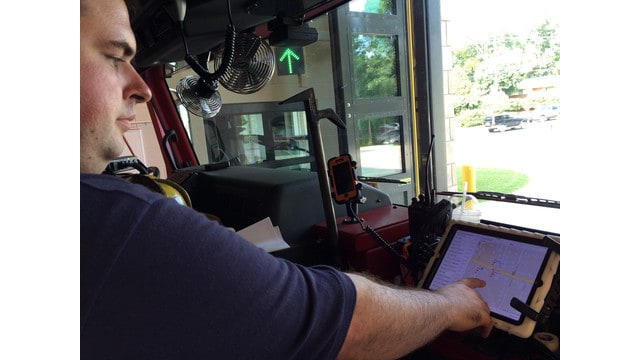
Firefighter Shift Schedules: A Comprehensive Guide.
The Firefighter work schedule is typically based on a 24 hour shift. However, the rotations of days on and off can be very different. let’s look at the Firefighter Shift Schedule.
How long is a firefighter work shift? This is a common question I receive from both the citizens we serve and potential firefighter candidates. It’s important when seeking a career as a firefighter that candidates have a good understanding of the firefighter work schedule.
The firefighter work schedule, often referred to as a shift schedule, is very different from most careers. It’s essential to understand the impact it will have on you and your family when you become a career firefighter.
Typically, a firefighter works an average of 48 to 56 hours a week, and the shift is normally 24 hours. However, as we will discuss, there are many different schedules and factors that will impact the schedule selected. Firefighters do not start collecting overtime until after their scheduled 48-hour or 56-hour workweek.
FEEL GREAT. DO GOOD. BUBS NATURALS
BUBS Naturals is a tribute to former Navy SEAL Glen Doherty, call sign “BUB.” He was a national hero who laid down his life saving Americans in Benghazi Libya in 2012. Glen was a best friend to hundreds and the BUBS ethos centers around the passionate and adventure-seeking life that Glen lived.
The mission is simple: feel great, do good. We are a collective of people who believe in helping our community live a fuller and more meaningful life through sport, adventure, travel, and aging well. As Glen liked to say, “die young as late as possible.”
The Daily Firefighter Work Routine While on Shift
A Day in the Life of a Firefighter: The 24-Hour Shift
Firefighter shifts typically last 24 hours, with shift rotations starting around 7:00 or 8:00 am. The day begins with the morning shift change, during which you’ll meet the outgoing firefighter and inform them that they are relieved of duty.
After a brief exchange about any issues or updates from the previous shift, the outgoing firefighter will remove their protective gear from the truck. As the incoming firefighter, you’ll then place your gear on your assigned truck and check your safety and protective equipment to ensure everything is in good working order.
Following this, a shift briefing takes place. During the briefing, the officer will inform the team about the day’s priorities, such as planned fire inspections and training sessions. You’ll also learn about your duties at the fire station and any assignments or responsibilities you’ll have during emergency calls.
Fire stations are often bustling environments with many people working in relatively confined spaces. Teamwork is crucial for maintaining a smooth operation throughout the shift. Everyone contributes to the house duties, including officers who may have “chores” to complete. Cleaning the station, preparing meals, checking trucks for readiness, and maintaining physical fitness are all part of the daily routine. To learn more about how firefighters stay fit, click here.
This well-organized routine takes place each morning, even as firefighters continue to respond to calls. The efficiency of fire station operations remains impressive, even after years of experience.
In the afternoon, firefighters typically engage in inspections, fitness activities, training, and study time. The evenings offer some downtime between calls, allowing firefighters to engage in personal activities such as calling home, studying for promotional exams, or watching TV with the crew.
One common question is whether firefighters sleep on duty. The answer is yes; during a 24-hour shift, firefighters will try to sleep as much as possible during nighttime hours. However, it’s important to note that sleep can be sporadic and interrupted by emergency calls, making it far from restful.
Types of Common Firefighter Work Schedules
Fire service work schedules can vary greatly, with the most common schedules being based on 24-hour shifts. However, other schedules may consist of shorter 8 or 12-hour shifts, or even longer 48-hour shifts.
The length of a shift can depend on several factors, but the most common reason is the call load that affects the crew. It’s not feasible for someone to work effectively and safely for 24 or 48 hours straight without affecting their performance. As a result, larger cities with busier fire stations often opt for reduced work schedules of 8 or 12 hours.
Another factor influencing shift schedules is the number of shifts within a department. Typically, a department will have three rotating shifts (A, B, and C, for example) to cover all days while distributing the workload evenly. In Example 1 below, you can see a common firefighter schedule where A shift workers are assigned the days marked in red.

Some fire departments still operate on a 2-shift system, rotating every 24 hours, although this is quite rare. Busier departments running shorter shifts, such as 12-hour shifts, may require a 4-shift rotation to cover the work schedule effectively.
Another prevalent work schedule is called the Kelly work schedule or a modified Kelly work schedule. The Kelly work schedule is said to have originated in 1936 by Mayor Kelly of Chicago, providing firefighters one day off for every seven days on duty.
The current Kelly firefighter work schedule comprises a 24-hour shift followed by 48 hours off, then returning for another 24-hour shift. This rotation continues until the 24-hour shift lands on the firefighter’s Kelly day, granting them a total of 5 days off.
The modified Kelly schedule involves a 24-hour on-shift followed by 24 hours off. This rotation continues for 3 shifts, after which the firefighter gets 4 days off.
Here’s a summary of the 3 most common firefighter work schedules currently used in the fire service:
- 24/48 Schedule: Widely used by many fire departments, firefighters work for 24 hours straight, followed by 48 hours off-duty. This pattern repeats in a cycle, typically leading to firefighters working an average of 10 days per month.
- 48/96 Schedule: In this schedule, firefighters work two consecutive 24-hour shifts (totaling 48 hours) and then have 96 hours (4 days) off-duty. This schedule has gained popularity in recent years, as it provides more consecutive days off for firefighters to rest and recover.
- Kelly Schedule: The Kelly Schedule is a nine-day rotation that consists of three different shifts. Firefighters work one 24-hour shift, have 24 hours off, work another 24-hour shift, have 24 hours off again, work a third 24-hour shift, and then have four consecutive days off. This schedule results in firefighters working an average of 9-10 days per month.
Each of these schedules has its advantages and drawbacks, with the choice often depending on the specific needs and resources of the fire department.
Less Common Firefighter Shift Schedules
There are many less common shifts schedule. Most are driven by the call load as well as the department structure. For example busy departments like DC Fire in Washington DC work 12 hour work schedules due to the heavy work load. Other shifts can be based on the number of firefighters.
Some departments only have 2 shifts so the rotation will be 24 hours on and off with no brake in the length of the shift rotation. This is uncommon but is still occasionally used. Some shifts will accommodate training schedules. By changing up the rotation it can create the opportunity to have each shift work in succession each week.
Who Regulates and Selects the Firefighter Shift Schedule
The Fair Labor Standards Act, FLSA, was enacted in 1838, however, it did not fully apply to state and local government until 1985. Since then, the FLSA has played a major role in determining whether firefighters are entitled to overtime and the hours that they must work before being eligible for overtime.
FLSA also determines the hours that are compensable, the overtime rate, and the rules that govern such common fire service practices as substitutions/shift trades, comp time, paid details and compensation for on-call time.
The statutory maximum for most employees is 40 hours in a seven-day workweek. FLSA allows a partial exemption for firefighters and law-enforcement personnel, which is known as the 207k exemption. Qualifying firefighters are allowed to work up to 53 hours per week, or up to 212 hours in a 28-day work period, before overtime is required.
Click here to learn more about the difference between Fire Departments and Fire Districts.
Who Decides on the Shift Schedule
How the shift schedule is selected will consider several factors. So of these factor such as staffing levels and number of calls are obvious, however, other items such as residency requirements and training schedules will also impact the decision for a particular schedule.
For example, due to the high cost of living and time it takes to travel to work in big metropolitan areas such as Los Angeles a 48/96 hour work week was developed. This cuts the travel for a firefighter in half due to the longer shifts.

The shift schedule will ultimately be decided through negotiations with the firefighter union, HR and FLSA criteria and staffing levels.
How the shift schedule is selected will consider several factors. So of these factor such as staffing levels and number of calls are obvious, however, other items such as residency requirements and training schedules will also impact the decision for a particular schedule.
For example, due to the high cost of living and time it takes to travel to work in big metropolitan areas such as Los Angeles a 48/96 hour work week was developed. This cuts the travel for a firefighter in half due to the longer shifts.
The shift schedule will ultimately be decided on through negotiations with the firefighter union, the human relations department, FLSA criteria and staffing levels.

Firefighter Candidate Exams opens with a description of the firefighter’s role, the important terminology he or she must understand, and the physical, medical, and written tests that every candidate must be able to pass for qualification. General advice and information for prospective firefighters includes physical fitness standards, and learning to recognize and correct weaknesses in visualization, spatial orientation, and more.



